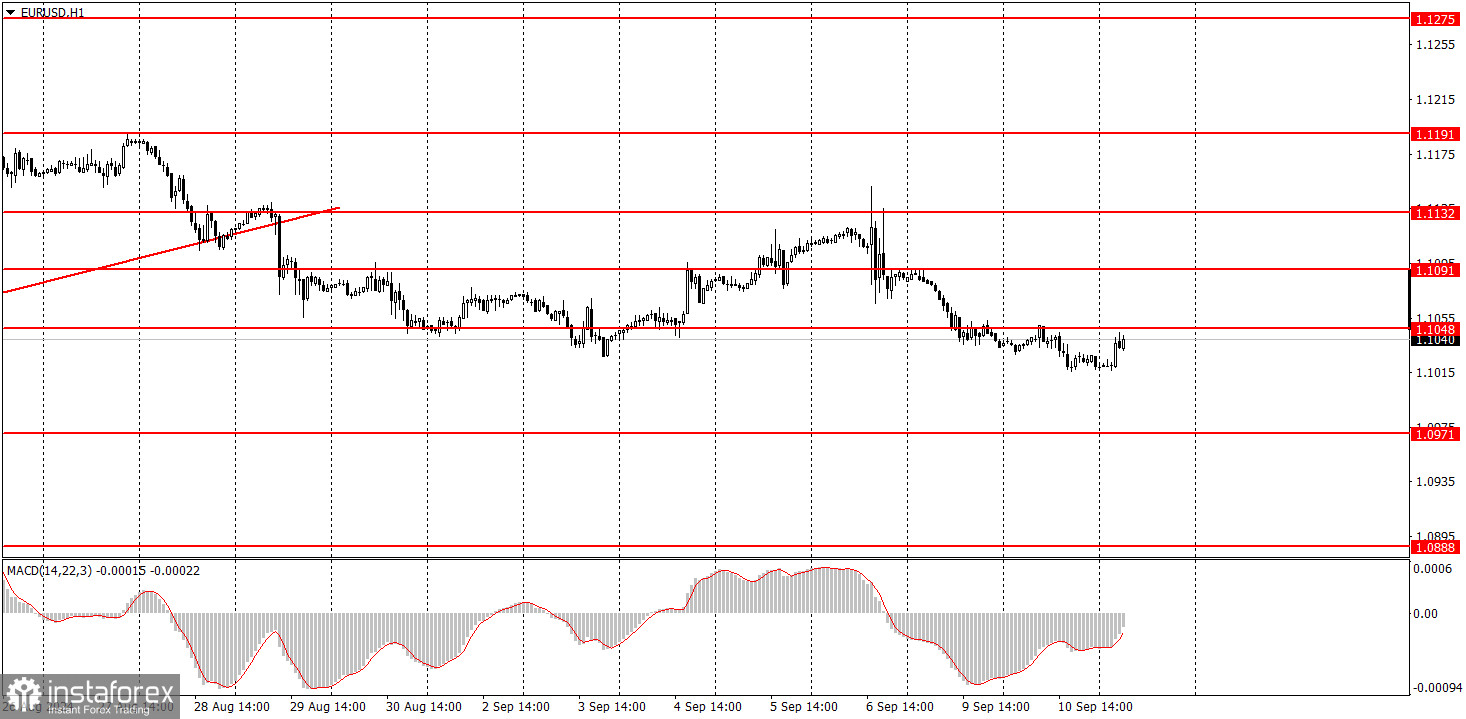Analysis of Macroeconomic Reports:

There aren't too many macroeconomic events scheduled for Wednesday, but it's not a quiet day either. The main point is that market participants are currently not interested in macroeconomic data from the UK or the Eurozone. The entire world is focused on the U.S. dollar and the Federal Reserve's monetary policy. Therefore, only those reports that can directly influence the Fed's decisions matter. Today, there is one such report: U.S. inflation. A lot has already been said about this report. Aside from that, the UK will release GDP data, but it won't be the quarterly data that holds some significance—just the monthly and three-month data. A report on industrial production will also be released. The market's reaction to British data is expected to be weak.
Overview of Fundamental Events:
Once again, there is nothing notable among Wednesday's fundamental events. The European Central Bank meeting will take place tomorrow, followed by the Bank of England and the Fed meetings next week. Thus, it's unlikely that any of these three central banks will comment on monetary policy prospects right now, as this is simply not allowed. The "blackout period" begins, but even without new comments, the market clearly understands what to expect from all three central banks.
General Conclusions:
On Wednesday, both currency pairs could trade in either direction, as everything will depend on the nature of the U.S. inflation report. During the European trading session, movements are likely to be weak and close to flat. A decline in the dollar can only be expected from the inflation report if it shows lower values than the market anticipates.
Basic Rules of the Trading System:
1) The strength of a signal is determined by the time it takes for the signal to form (bounce or level breakthrough). The less time it took, the stronger the signal.
2) If two or more trades were opened around any level due to false signals, subsequent signals from that level should be ignored.
3) In a flat market, any currency pair can form multiple false signals or none at all. In any case, it's better to stop trading at the first signs of a flat market.
4) Trades should be opened between the start of the European session and midway through the U.S. session. After this period, all trades must be closed manually.
5) In the hourly time frame, trades based on MACD signals are only advisable amidst good volatility and a trend confirmed by a trendline or trend channel.
6) If two levels are too close to each other (5 to 20 pips), they should be considered a support or resistance area.
7) After moving 15-20 pips in the intended direction, the Stop Loss should be set to break even.
What's on the Charts:
Support and Resistance price levels: targets for opening long or short positions. You can place Take Profit levels around them.
Red lines: channels or trend lines that depict the current trend and indicate the preferred trading direction.
The MACD indicator (14,22,3): encompassing both the histogram and signal line, acts as an auxiliary tool and can also be used as a source of signals.
Important speeches and reports (always noted in the news calendar) can profoundly influence the movement of a currency pair. Hence, trading during their release calls for heightened caution. It may be reasonable to exit the market to avoid sharp price reversals against the prevailing movement.
For beginners, it's important to remember that not every trade will yield profit. Developing a clear strategy and effective money management is key to success in trading over the long term.
 English
English 
 Русский
Русский Bahasa Indonesia
Bahasa Indonesia Bahasa Malay
Bahasa Malay ไทย
ไทย Español
Español Deutsch
Deutsch Български
Български Français
Français Tiếng Việt
Tiếng Việt 中文
中文 বাংলা
বাংলা हिन्दी
हिन्दी Čeština
Čeština Українська
Українська Română
Română


